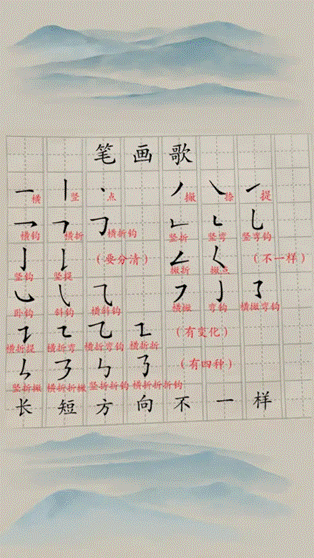
For English speakers learning Chinese, characters often stand out as the most challenging part. Unlike the phonetic English alphabet, Chinese characters are built from strokes—the basic lines that form their core structure. Many learners rush to memorize character shapes directly, only to forget them quickly or mix up similar ones. The secret to remembering more characters lies in mastering strokes first. Here’s why strokes matter and how to learn them well.
Why Strokes Are Non-Negotiable for Learning Chinese Characters
Strokes aren’t just “lines on paper”—they are the foundation of character recognition, writing, and memory. Ignoring them leads to common mistakes (like miswriting “土” as “士” or confusing “买” with “卖”), while learning them brings three key benefits:
• Avoid confusion between similar characters: Countless Chinese characters look almost identical but differ in strokes. For example, “日” (rì, sun, 4 strokes) and “曰” (yuē, say, 4 strokes) only vary in the length of their middle horizontal stroke. Knowing stroke details lets you tell them apart instantly.
• Boost long-term memory: When you learn a character by its strokes, you’re not memorizing a random shape—you’re breaking it into logical parts. Take “山” (shān, mountain): it has 3 strokes, which visually mimic a mountain’s peaks. This “stroke-to-meaning” link makes characters easier to recall than if you just memorize their outline.
• Build a solid writing habit: Every Chinese character has a fixed stroke order (e.g., write horizontal lines before vertical ones, top to bottom). Following this order ensures your writing is neat and efficient—and it also trains your brain to “recognize” characters faster when reading.
Practical Steps to Learn Strokes and Remember More Characters
You don’t need to master all strokes at once. Start with the basics, then practice consistently with these methods:
1. Learn the 8 basic strokes first
All Chinese characters are made from 8 core strokes. Spend 1-2 days familiarizing yourself with them—write each slowly and say their names (in Chinese or English) to build muscle memory:
◦ 一 (Horizontal)
◦ 丨 (Vertical)
◦ 丿 (Left-falling)
◦ 丶 (Right-falling/Dot)
◦ 亅 (Hook)
◦ 乛 (Turn)
◦㇀ (Rising)
◦ ㇔ (Short Dot)
2. Stick to 3 key stroke order rules
You don’t need to memorize every character’s order by heart—just follow these three simple rules:
◦ Top to bottom: E.g., “三” (sān, three) is written 一 → 二 → 三.
◦ Left to right: E.g., “川” (chuān, river) is written 丿 → 丨 → 丿.
◦ Close frames last: E.g., “口” (kǒu, mouth) is written 丨 → 𠃌 → 一 (close the bottom horizontal stroke last).
3. Practice “stroke-by-stroke writing” (not copying)
Copying a character whole won’t help you remember it. Instead, write it one stroke at a time:
1. Look at the character and say its stroke order (e.g., “Horizontal, vertical, left-falling, right-falling” for “木” (mù, tree)).
2. Write each stroke slowly, matching the example’s length and direction.
3. Repeat 3-5 times, then try writing it from memory. This forces your brain to “encode” the character’s structure deeply.
4. Use “stroke stories” for complex characters
For characters with more strokes, turn their stroke order into a simple story. For example, “
“火” (huǒ, fire) has 4 strokes (丶, 丿, 丿, 丶): imagine the first dot as a spark, the two left-falling strokes as burning wood, and the final dot as another spark. This mental image connects strokes to meaning, making even tricky characters easy to remember.
Final Tip: Start Small, Stay Consistent
Learning Chinese characters is a marathon, not a sprint. Don’t try to memorize 20 characters a day—instead, pick 5 simple ones (like “人”, “口”, “木”, “火”, “水”) each day, master their strokes, and practice writing them correctly. Over time, these small steps will add up: you’ll recognize more characters when reading, write with confidence, and even start understanding how characters combine (e.g., “木” + “木” = “林” (lín, forest)).
Strokes are the key to unlocking Chinese characters—master them, and you’ll turn a daunting task into a rewarding journey!